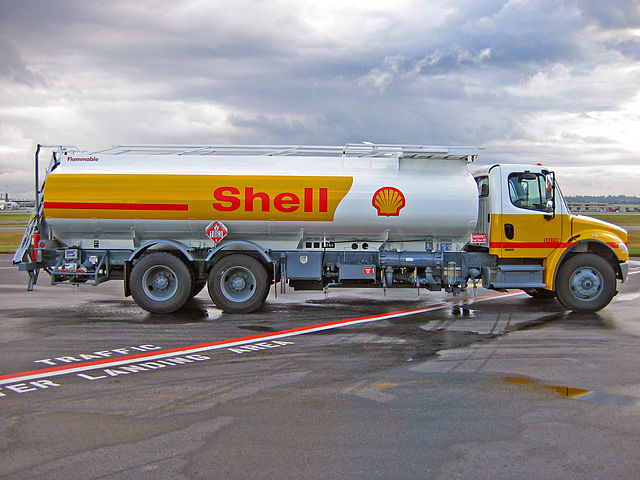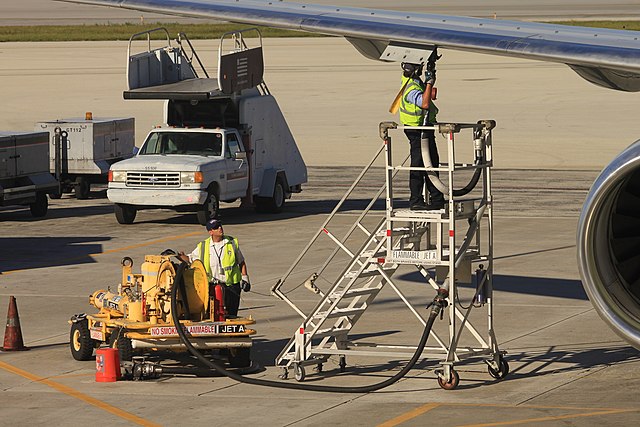Jet fuel or aviation turbine fuel is a type of aviation fuel designed for use in aircraft powered by gas-turbine engines. It is colorless to straw-colored in appearance. The most commonly used fuels for commercial aviation are Jet A and Jet A-1, which are produced to a standardized international specification. The only other jet fuel commonly used in civilian turbine-engine powered aviation is Jet B, which is used for its enhanced cold-weather performance.
An Airbus A310-300 of Czech Airlines being fueled at Prague Václav Havel Airport
Shell Jet A-1 refueller truck on the ramp at Vancouver International Airport. Note the signs indicating UN1863 hazardous material and JET A-1.
A US Airways Boeing 757 being fueled at Fort Lauderdale–Hollywood International Airport
An Iberia Airbus A340 being fueled at La Aurora International Airport
Aviation fuels are petroleum-based fuels, or petroleum and synthetic fuel blends, used to power aircraft. They have more stringent requirements than fuels used for ground use, such as heating and road transport, and contain additives to enhance or maintain properties important to fuel performance or handling. They are kerosene-based for gas turbine-powered aircraft. Piston-engined aircraft use leaded gasoline and those with diesel engines may use jet fuel (kerosene). By 2012, all aircraft operated by the U.S. Air Force had been certified to use a 50-50 blend of kerosene and synthetic fuel derived from coal or natural gas as a way of stabilizing the cost of fuel.
An aviation fuel truck
At some airports, underground fuel pipes allow refueling without the need for tank trucks. Trucks carry the necessary hoses and pumping equipment, but no fuel.
Ground fueling of a MiG-29 from a URAL tanker (2011)
Aviation fuel storage tanks at George Bush Intercontinental Airport, Houston, Texas







